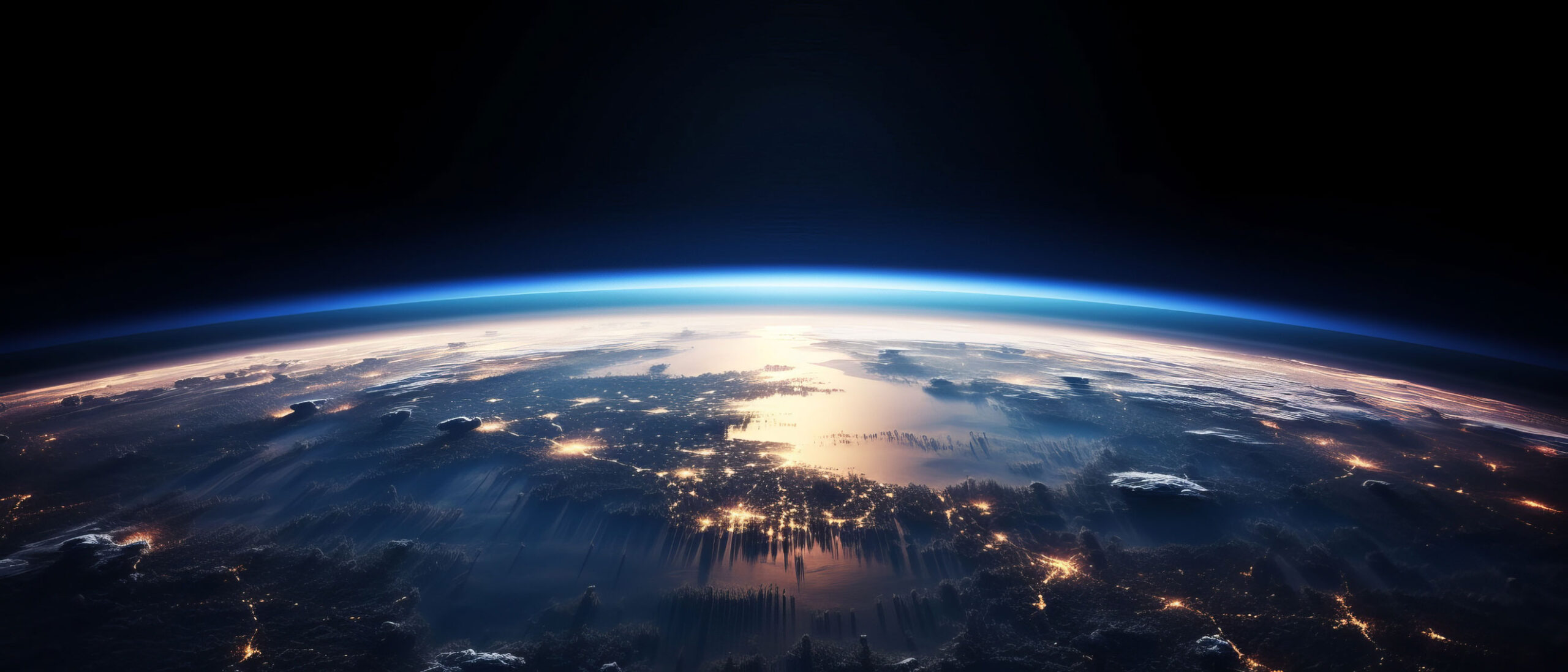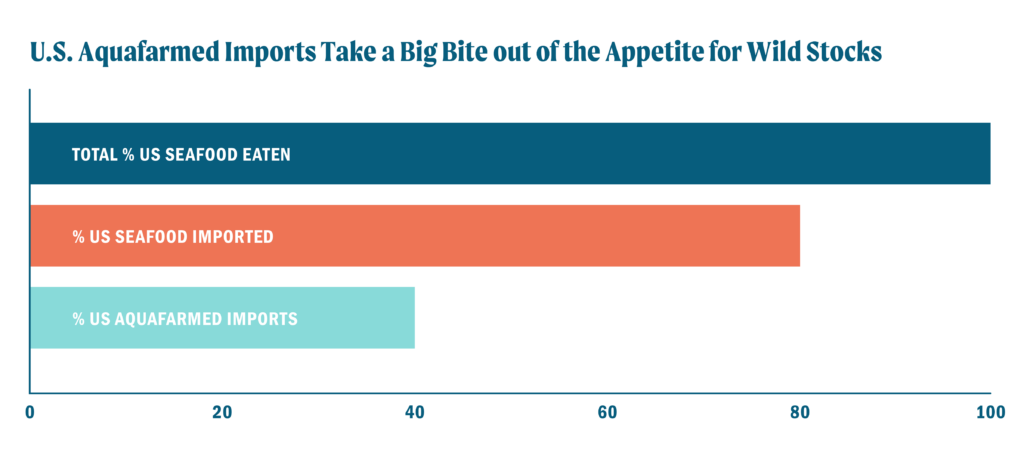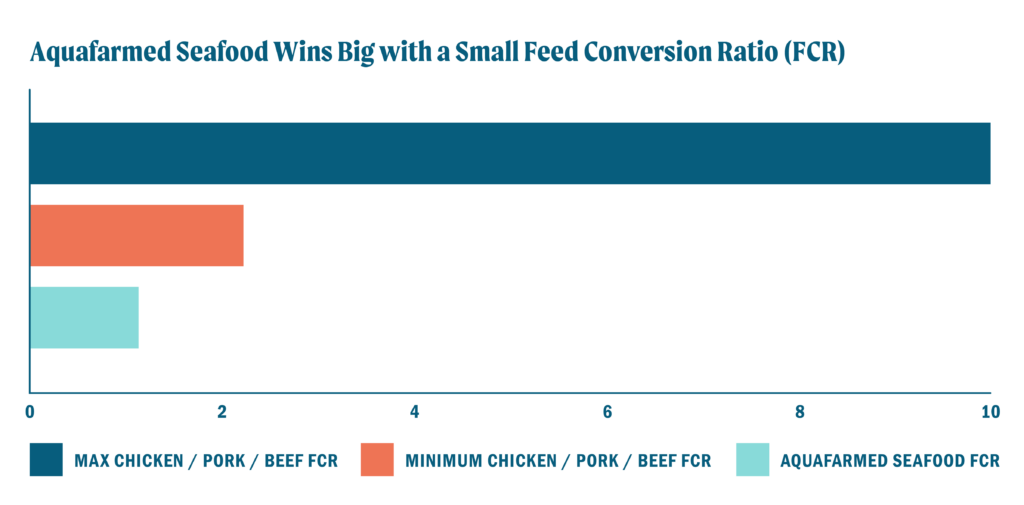
Sustaining the Earth’s Natural Systems
Part one in this series noted how responsibly managed advanced aquaculture practices can feed the world’s growing population while protecting our planet. The Earth’s natural systems make the best teacher of how to sustain life on it.
The Ellen Macarthur Foundation, a non-profit organization working to accelerate the transition to a “circular economy,” cites a way to follow Nature’s plan by shifting our focus from resource extraction to regeneration to better align human and ecological needs:
“By moving from a take-make-waste linear economy to a circular economy, we support natural processes and leave more room for nature to thrive.”
Minimizing the number of natural resources we extract from the Earth, maximizing the efficiency in converting the protein they contain for human consumption, and reducing the carbon production footprint of that process can all work toward bringing the Earth’s natural systems back into balance.
Here are three ways responsible aquaculture practices can play a role in realizing that shift to a more sustainable world:
1. Minimizing Resource Extraction
Fish farming rises to reduce pressure on wild stocks
NOAA Fisheries notes the role aquaculture can play in supporting wild fisheries production. That traditional seafood source has held steady for over 20 years while the global human population continued to grow. An estimated 70 to 85 percent of the seafood eaten in the U.S. is imported, with about half of that amount farmed. Clearly, aquaculture plays a critical role in minimizing the need to extract more wild stocks to keep up with a hungry world’s demands.

Increasing feed efficiency
The international science journal, Nature, authored a 20-year retrospective review of global agriculture that revealed the significant gains in aquaculture feed efficiency and fish nutrition that have occurred over that time. Those advancements have lowered the “fish-in-fish-out” ratio that describes the quantity of live fish needed to make the fishmeal or fish oil required to produce a unit of farmed seafood. The journal notes that “the dependence on marine ingredients persists, but reliance on terrestrial ingredients has increased.” Whatever the perfect balance of those two sources may be, lowering this ratio reflects advances that can keep both fish and our planet growing strong.
2. Maximizing Protein Conversion
Optimizing the Feed Conversion Ratio (FCR)
According to NOAA Fisheries, aquaculture operations cite Feed Conversion Ratios (FCR) as evidence that aquaculture is more efficient at converting feed into protein for human consumption than beef, pork, and poultry. FCR is commonly expressed as the ratio of the pounds of feed it takes to grow one pound of farmed livestock. As the Global Seafood Alliance notes, the feed conversion ratio for farmed seafood is about 1.1, meaning about one pound of fish feed produces one pound of protein. Compared with the 2.2 to 10 pounds of feed it takes to make a pound of chicken, pork, or beef, this conventional measure of protein makes a strong case for aquaculture’s protein efficiency.

Refining the metrics that can keep aquaculture advancing
But the continual pursuit of aquaculture’s promise of sustainability demands going beyond “conventional measures.” A Johns Hopkins study cited by the food-future-focused consortium, Table, points to the additional metrics that may be required for a more accurate evaluation of protein efficiency. Hopkins researchers revealed the need to account for the nutritional composition of feed, the edible portion of the animal nurtured by it, and the nutritional quality of that portion for a truer measure of aquatic animal production efficiency. The comparative results of the “Calorie Retention” and “Protein Retention” yielded by this formula show a more nuanced picture of aquaculture vs. land-based feed efficiency. However, as Figure 2 in the Table article shows, there is still a dramatic increase in protein conversion efficiency in a species like farm-raised Atlantic salmon over pork and beef.
3. Reducing the Carbon Production Footprint
Cutting wild-catch carbon
The Fish Site provides an in-depth analysis of the carbon footprint of different aquaculture species and compares it to other forms of animal protein production. According to the Louisiana State University article shared on the site, carbon footprint values ranging from 4 kg to 540 kg have been reported for wild seafood products (per kg protein), compared to a range of 4 to 75 for aquaculture. Though the paper admits that reliable figures on different aquatic species are hard to find, zeroing in on a single one seems to sharpen the potential aquaculture may hold. Farmed salmon are estimated to generate only 1.61kg of carbon per kg of protein, while their wild-caught counterparts more than double that rate at 3.37 kg.

Creating a maritime climate for change
The Nature Conservancy (TNC) takes a broader perspective on marine aquaculture that’s appropriate for an environmental organization with a global mission to conserve the lands and waters on which all life depends. It notes aquaculture’s carbon-cutting power as a critical piece of the puzzle for feeding the world while meeting the challenges of climate change. But though “most farmed seafood has about a tenth of the carbon emissions as beef,” that current clean, green advantage is just the start of a long list of actions that TNC notes that marine farms can take to shrink their carbon footprints even further. These include proper site location, feed efficiency increases, precision technology adoption, transition to renewable energy sources, and more.
The next posts in this series will highlight the specific ways Secret Island is instituting some of these practices to advance the sustainability of our seafood and world.
